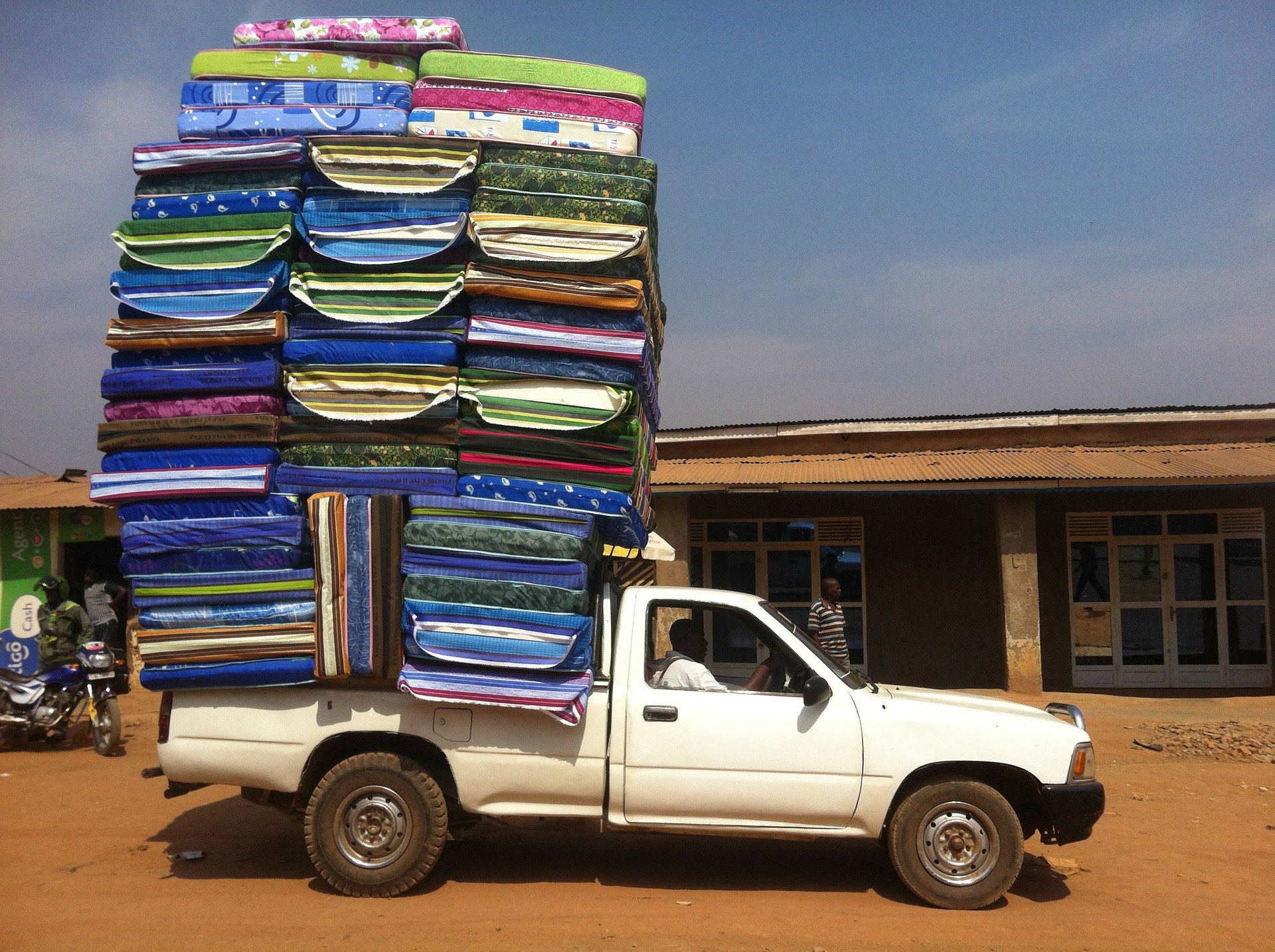
Sometimes you do not need a crystal ball to be able to foresee the future, because there are already a few precursors that can accurately sketch out what this will look like. Such a forerunner is the company Niaga based on the Brightlands Chemelot Campus in the Dutch town of Geleen. Niagra is part of DSM and is being taken over by Covestro next year.
Niaga – ‘again’ spelled backward – originated from a carpet manufacturer start-up, ehose founders included Chris Reutelingsperger. He had always dreamed of making a carpet that was fully recyclable. But he did not succeed at first because he couldn’t find an adhesive to replace latex that could bind the yarn of the underside of the fabric firmly with the polyester carpet. And this was necessary because it is precisely this tricky latex that makes recycling difficult, says Chantal Jörissen, marketing director at Niaga.
Only 4 percent of carpets are recycled
“There are different methods, like shearing off the upper part of the carpet.” In total, these methods yield a recycling rate of 4 percent of all discarded carpets. While carpets are one of the largest non-recyclable waste products that are now incinerated or end up in a landfill and consequently take up land that cannot be used in any other worthwhile way.”
As a supplier of raw materials for the carpet industry, DSM has invested in the start-up of Reutelingsperger. They then started working on inventing an adhesive that was recyclable and that firmly binds the fibers onto the fabric. DSM took over Niaga when they succeeded. That was two years ago now.
Glue is the secret
Since then, Niaga sells carpet machines and its specialized glue to large carpet manufacturers for the manufacture of fully-recyclable carpet. A code is placed on the carpet so that it can be picked up from the supplier after it has been scanned. The supplier brings it back to Niaga and recycles it back into raw material for a brand new carpet.
Niaga in Geleen also has its own in-house manufacturing facility to make carpet for manufacturers who do not purchase the machinery themselves. There, Niaga also manufactures its own carpet suitable for offices, Jörissen tells us. This quality is known as ‘Class 33‘. “That means that it has the toughest quality a carpet can have as is needed in an office where chairs roll about and a lot of people are walking around.”
The reason why Niaga is marketing a product itself is that it has a ‘lighthouse role’, says Jörissen. This allows the market to see that it is possible to make a fully recyclable carpet that is both beautiful and durable. The aim is for carpet manufacturers to take over the manufacturing process en masse. This would put an end to the large-scale dumping and burning of old carpets. Which would make all carpets recyclable in the future.
Ikea also wants to recycle
Meanwhile, Niaga has also developed fully recyclable furniture panels for the construction of e.g. cabinets, tables, and bed frames. As well as solutions for mattresses (in collaboration with Auping). These are two other major sources of non-recyclable waste. Niaga has not built machinery for these two recyclable products. Neither has it launched its own product on the market. “Because this wasn’t necessary. Auping knows how to make mattresses. And we know how to make materials. This collaboration has resulted in a recyclable mattress that they manufacture themselves. They use the glue that we developed. We supply that to them.”
Niaga does make furniture panels that it supplies to furniture manufacturers, but they make their own furniture out of it, Jörissen adds. They don’t need their own production line there either and it would be complex to set up.
One of the reasons that fully recyclable carpets, furniture, and mattresses have the future is that the stocks of raw materials are not inexhaustible. “A company like Ikea has an interest in taking back discarded furniture because they can then reuse the raw materials. If shortages occur in the future, then raw materials will become increasingly more expensive. You can see that they are experimenting with this now. For example, they had a promotional campaign where you could get a discount on new purchases if you returned used Ikea furniture.”
Europe is a forerunner in the world
Europe is a forerunner in this respect, says Jörissen. Although there are other regions in the world such as California, Canada, and Singapore where the recycling industry is evolving. It is not only essential to create a good market for recyclable raw materials and end products, it is also important to work with as few raw materials and connections between them as possible.
It is also crucial that recycling companies that specialize in the collection of waste products such as furniture, mattresses, and carpets are set up in order to process these into high-quality new raw materials. “These are not in place yet.”
You can also read the previous articles in this series here:
‘Xilloc: ‘Requests from dozens of hospitals worldwide for 3D-printed implants’
‘Dutch Arlanxeo: ‘85% less CO2 emissions thanks to rubber from sugar cane’

